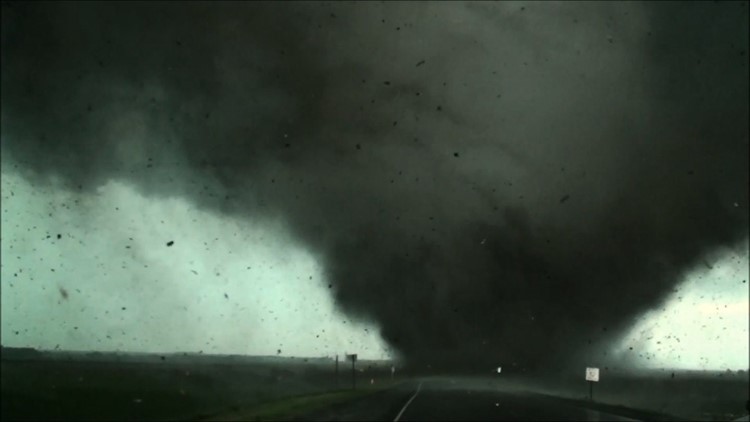(CNN) — Blame Canada. Or maybe thank Canada. It may be extra chilly up north this spring, but that cold air from our northern neighbor is helping limit tornadoes in tornado alley.
Two of the US states most notable for tornadoes — Kansas and Oklahoma — have yet to see one so far this year.
“On the whole, across the United States, we have seen around half the number of eyewitnessed tornado reports that we would normally expect by this time of year,” says Dr. Patrick Marsh, a meteorologist at the Storm Prediction Center.
“Across the Plains, it is about as quiet as it can possibly be.”
It is the longest into the year that Oklahoma has ever gone without a tornado since NOAA began keeping records. The previous record was April 26, 1962.
If Kansas makes it to the end of April without a tornado, it will only be the fourth time this has occurred on record.
More snowstorms, fewer twisters
It hasn’t felt like spring for many across the central and northeastern United States this season. To the dismay of meteorologists everywhere, the groundhog got it right this year.
The cold air intrusion from central Canada has led to repeated snowstorms across the Northern Plains and Midwest.
“The fact that this jet pattern has continued, has piled record snow in places in the Upper Midwest, has likely saved lives from tornado deaths in the Southern Plains,” says CNN meteorologist Chad Myers.
Severe storms that produce tornadoes need multiple ingredients — including a mix of cold and warm air — to form. Without the warm, moist air, Midwesterners are seeing more stable weather conditions.
“This cold, dry air mass limits two of the main ingredients for severe thunderstorms and tornadoes, namely warm and moist air,” says Marsh.
But the snowstorms have caused Major League Baseball to set an all-time record for postponed games this early in the season. The Chicago Cubs have already had to move two games because of snow.
“Baltimore and Pittsburgh each had home games postponed on Tuesday, bringing the MLB total to 28 so far this season — a record through the first month of the season,” says CNN meteorologist Taylor Ward.
But that could quickly change
“To paraphrase a Danish proverb, it’s dangerous to make seasonal tornado predictions, especially about the future,” Marsh says.
“A single strong cyclone can end up producing a multi-day tornado outbreak with between 100 and 200 tornadoes. It does not take many of these types of events to completely change the character of a year,” he says.
Myers agrees.
“All this means is that we have had a slow start,” he says. “If a blocked pattern sets up with a trough over the Plains, we could have multiple outbreaks per week.”
And all it takes is one or two huge storms to change everything.
Marsh points to the 2013 season, which was one of the quietest of the past 30 years in terms of the number of tornadoes. And yet that season became one of the most memorable after Moore, Oklahoma, was ravaged by an EF5 tornado and three renowned storm chasers were killed by another huge twister in the central part of the state.
You won’t remember what a quiet year it’s been for tornadoes if one strikes your town or affects your family, Marsh cautions.
“Your entire worldview would be forever altered,” he says.



